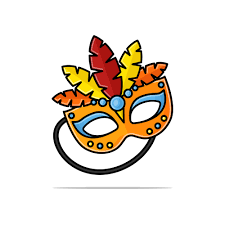
Purim is a Jewish holiday that commemorates the saving of the Jewish people from Haman, who was planning to kill all the Jews. This took place in the ancient Achaemenid Persian Empire. The story is recorded in the Biblical Book of Esther. This year Purim begins on Monday, March 6th evening and ends on Tuesday, March 7th.
According to the Book of Esther, Haman, royal vizier to King Ahasuerus of Persia, planned to kill all the Jews in the empire but, his plans were foiled by Mordecai and his cousin Esther, who had become Queen of Persia. The day of deliverance became a day of feasting and rejoicing.
Purim is celebrated among Jews by:
- Exchanging reciprocal gifts of food and drink known as mishloach manot
- Donating charity to the poor known as mattanot la-evyonim[6]
- Eating a celebratory meal known as a se’udat Purim
- Public recitation (“reading of the megillah”) of the Scroll of Esther, known as kriat ha-megillah, usually in synagogue
- Reciting additions, known as Al HaNissim, to the daily prayers and the grace after meals
- Other customs include drinking wine or any other alcoholic beverage, wearing of masks and costumes, and public celebration.
- Purim is celebrated annually according to the Hebrew calendar on the 14th day of the Hebrew month of Adar (and on Adar II in Hebrew leap years that take place every 2 to 3 years), the day following the victory of the Jews over their enemies.
Observances
Purim has more of a national than a religious character, and its status as a holiday is on a different level than those ordained holy by the Torah. Hallel is not recited. Accordingly, business transactions and even manual labor are allowed on Purim. A special prayer (“Al ha-Nissim”—”For the Miracles”) is inserted into the Amidah prayers during evening, morning and afternoon prayer services, and is also included in the Birkat Hamazon (“Grace after Meals.”)
Purim Foods
As part of their celebration many Jews will enjoy a festive meal called the Purim se’udah (meal). There are no particular foods that must be served at this holiday meal, though dessert will usually include triangular shaped cookies called hamantaschen. These cookies are filled with fruit marmalade or poppy seeds and are a treat people look forward to every year.
They were originally called “mundtaschen,” meaning “poppy seed pocket,” the word “hamantaschen” is Yiddish for “haman’s pockets.” In Israel they are called “oznei Haman,” meaning “Haman’s ears.”
There are three explanations for the triangular shape of hamantaschen. Some say they represent a triangular-shaped hat worn by Haman, the villain in the Purim story, and that we eat them as a reminder that his dastardly plot was foiled. Others say they represent Esther’s strength and the three founders of Judaism: Abraham, Isaac and Jacob. Yet another explanation applies only to “oznei Haman.” When called by this name, the cookies make reference to an old custom of cutting off the ears of criminals before they were executed. Whatever their name, the reason behind eating hamantaschen remains the same: remembering how close the Jewish people came to tragedy and celebrating the fact that we escaped.
** Purim facts courtesy of: Wikipedia.com and thoughtco.com